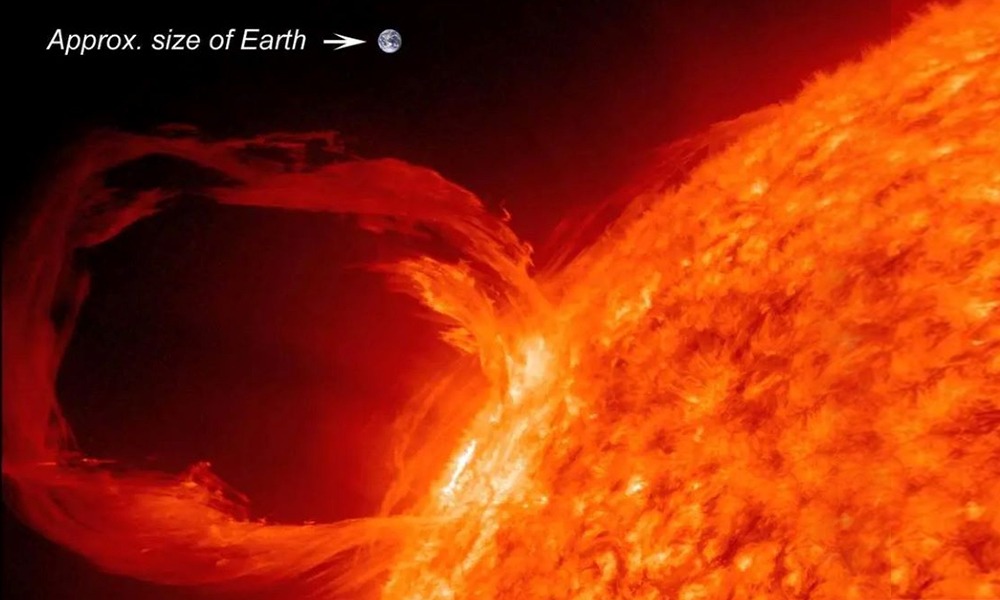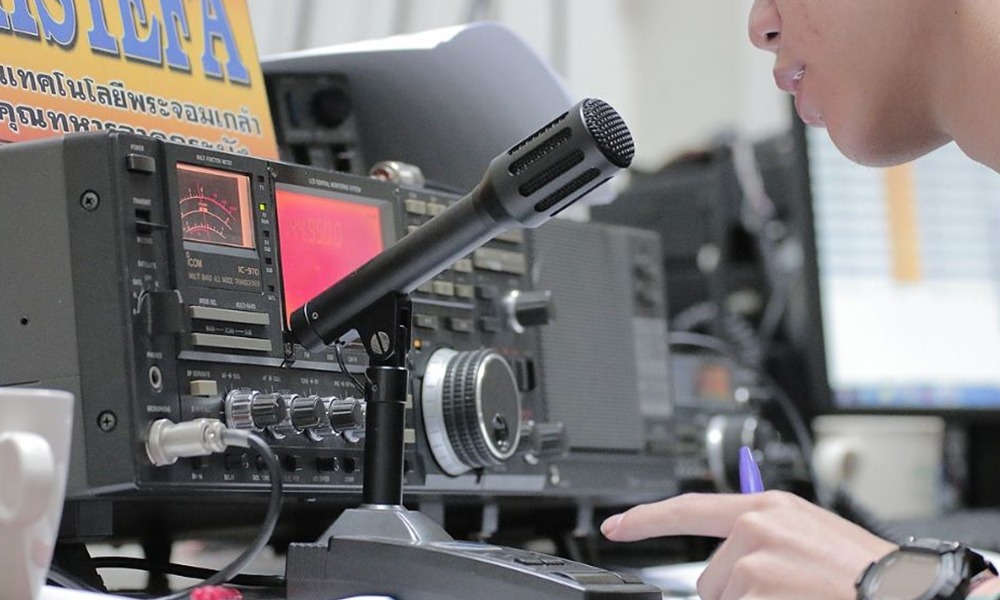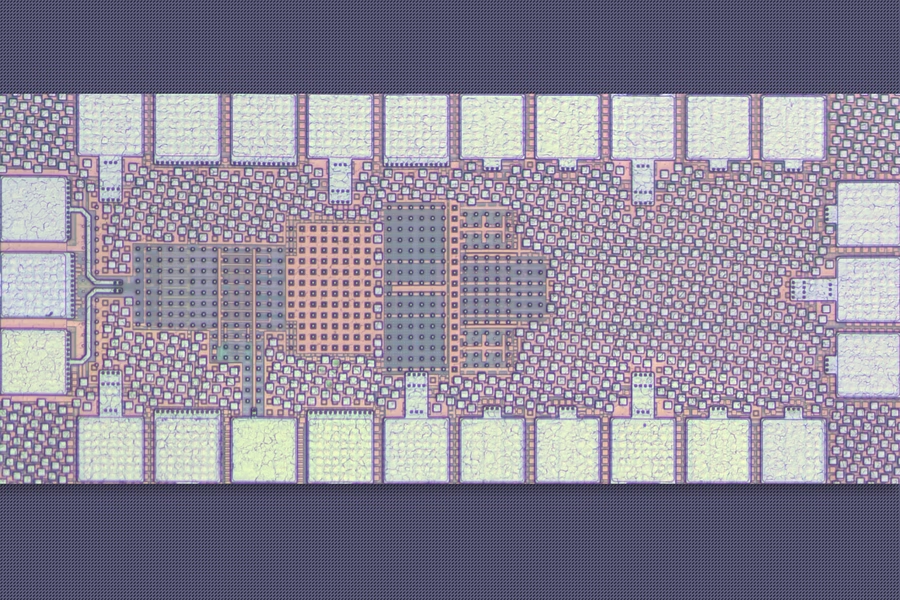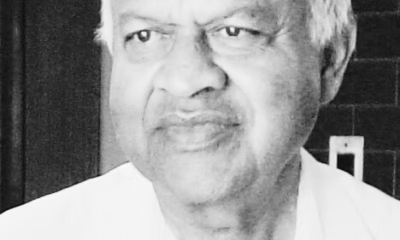Space & Physics
The total solar eclipse across North America sees citizens become scientists
As the total solar eclipse becomes visible when it streaks past North America, ‘citizen scientists’ are at work, beaming radio signals to support scientific experiments.

Monday’s total solar eclipse lent unearthly vibes all round in North America. Across North America where the solar eclipse’s shadow streaked past for nearly two hours, all chatter subsided. Even radio signals would’ve gone awry in places, as people across the US, Canada and Mexico America peered at the sky as the color slowly drained from the sky when the moon eclipsed the sun.
If it hadn’t been for the red tendril-like features extending out from the sun in several captures of the eclipse event, one would’ve thought that our sun collapsed into a black hole – in fact, reminiscent of Gargantua from Christopher Nolan’s Interstellar (2014).
Chatter soon broke out on the internet following the first sighting. Pictures of the solar eclipse was shared across social media platforms, taken from places and vantage points within and outside of the shadow’s trajectory across North America.
The red-tendril-like features, or the solar prominence as it’s described by astronomers, is a plume of plasma that outlines the sun’s extensive but otherwise invisible magnetic field. The plasma trails the shape of the field lines there, giving it the appearance of that filament. Moreover, the white hot corona in the image is remarkably over millions of degrees hotter than the sun’s outer layer. The invisible beauty of our sun now is unraveled as we see the naked truth, with the surrounding sky turning pitch black of empty space in the meantime.

A solar prominence event where loops of hot plasma is wound in a loop by the sun’s magnetic field. Credit: NASA
Features like the prominence have long been known to astronomers for centuries. Solar eclipses are perhaps amongst the only times when day-light astronomy could be done.
History is replete with records of scientists making important discoveries during solar eclipses. For example, in 1868, the French astronomer Pierre Janssen detected a signature of a then unknown element inadvertently as he observed a solar eclipse from Madras State in colonial India. Further detections by the English astronomer Norman Lockyer later in the same year conclusively established the new element – named helium ( after the Greek ἥλιος or helios meaning the sun).
Not just that, the English astrophysicist Arthur Eddington carried out experiments involving sunlight amidst the solar eclipse in 1919, whose results had Albert Einstein’s theory of general relativity prevail over Isaac Newton’s gravitational theory. Eddington and other researchers had captured the precise deflection angle by which the sun’s gravitational field bent light from background stars.
Fast forward to today, Monday’s solar eclipse left an open window to do some important science. Not of the sun, but investigating the interactions between the sun and earth’s upper atmosphere – particularly the ionosphere, which lies above the stratosphere, at over 60 to 300 km. Everyday long distance radio communication is possible because the radio transmissions get deflected by this layer, which is ionized (presence of charged atoms and negatively charged electrons), in part due to solar radiation from the sun.
But during solar eclipses, the ionosphere is suddenly caught in disarray, even hampering radio communications. However, Monday’s solar eclipse found ways to turn even ordinary citizens into scientists, beaming radio signals at the ionosphere in an effort at scientific experimentation and establishing alternate forms of communication.
The Ham Radio Science Citizen Investigation (HamSCI) is one effort in the US during Monday’s eclipse that linked up amateur radio ham operators across North America, for data gathering.
As much as there is genuine scientific curiosity motivating the experiments, there are clear societal reasons why these efforts are more important than ever. Understanding how reflective the ionosphere can be, should help better inform emergency response teams to use forms of radio signaling that may work effectively amidst hostile space weather – as it did during Hurricane Irma in 2017.

A radio ham set. Credit: Wikimedia
With citizens as both participants and organizers, they can help scientific estimates of the electron density in the ionosphere and how much it attenuates there.
The more modern rendition of participatory science, or ‘citizen science’, makes its presence felt during these times, as they keep the culture and ancient tradition that is astronomy alive in new ways. And in doing so, their efforts stand testimony to how ordinary people can take up the lead in place of scientists, to act in service of both science and society.
Space & Physics
MIT unveils an ultra-efficient 5G receiver that may supercharge future smart devices
A key innovation lies in the chip’s clever use of a phenomenon called the Miller effect, which allows small capacitors to perform like larger ones

A team of MIT researchers has developed a groundbreaking wireless receiver that could transform the future of Internet of Things (IoT) devices by dramatically improving energy efficiency and resilience to signal interference.
Designed for use in compact, battery-powered smart gadgets—like health monitors, environmental sensors, and industrial trackers—the new chip consumes less than a milliwatt of power and is roughly 30 times more resistant to certain types of interference than conventional receivers.
“This receiver could help expand the capabilities of IoT gadgets,” said Soroush Araei, an electrical engineering graduate student at MIT and lead author of the study, in a media statement. “Devices could become smaller, last longer on a battery, and work more reliably in crowded wireless environments like factory floors or smart cities.”
The chip, recently unveiled at the IEEE Radio Frequency Integrated Circuits Symposium, stands out for its novel use of passive filtering and ultra-small capacitors controlled by tiny switches. These switches require far less power than those typically found in existing IoT receivers.
A key innovation lies in the chip’s clever use of a phenomenon called the Miller effect, which allows small capacitors to perform like larger ones. This means the receiver achieves necessary filtering without relying on bulky components, keeping the circuit size under 0.05 square millimeters.

Traditional IoT receivers rely on fixed-frequency filters to block interference, but next-generation 5G-compatible devices need to operate across wider frequency ranges. The MIT design meets this demand using an innovative on-chip switch-capacitor network that blocks unwanted harmonic interference early in the signal chain—before it gets amplified and digitized.
Another critical breakthrough is a technique called bootstrap clocking, which ensures the miniature switches operate correctly even at a low power supply of just 0.6 volts. This helps maintain reliability without adding complex circuitry or draining battery life.
The chip’s minimalist design—using fewer and smaller components—also reduces signal leakage and manufacturing costs, making it well-suited for mass production.
Looking ahead, the MIT team is exploring ways to run the receiver without any dedicated power source—possibly by harvesting ambient energy from nearby Wi-Fi or Bluetooth signals.
The research was conducted by Araei alongside Mohammad Barzgari, Haibo Yang, and senior author Professor Negar Reiskarimian of MIT’s Microsystems Technology Laboratories.
Society
Ahmedabad Plane Crash: The Science Behind Aircraft Take-Off -Understanding the Physics of Flight
Take-off is one of the most critical phases of flight, relying on the precise orchestration of aerodynamics, propulsion, and control systems. Here’s how it works:

On June 12, 2025, a tragic aviation accident struck Ahmedabad, India when a regional passenger aircraft, Air India flight A1-171, crashed during take-off at Sardar Vallabhbhai Patel International Airport. According to preliminary reports, the incident resulted in over 200 confirmed casualties, including both passengers and crew members, and several others are critically injured. The aviation community and scientific world now turn their eyes not just toward the cause but also toward understanding the complex science behind what should have been a routine take-off.
How Do Aircraft Take Off?
Take-off is one of the most critical phases of flight, relying on the precise orchestration of aerodynamics, propulsion, and control systems. Here’s how it works:
1. Lift and Thrust
To leave the ground, an aircraft must generate lift, a force that counters gravity. This is achieved through the unique shape of the wing, called an airfoil, which creates a pressure difference — higher pressure under the wing and lower pressure above — according to Bernoulli’s Principle and Newton’s Third Law.
Simultaneously, engines provide thrust, propelling the aircraft forward. Most commercial jets use turbofan engines, which accelerate air through turbines to generate power.
2. Critical Speeds
Before takeoff, pilots calculate critical speeds:
- V1 (Decision Speed): The last moment a takeoff can be safely aborted.
- Vr (Rotation Speed): The speed at which the pilot begins to lift the nose.
- V2 (Takeoff Safety Speed): The speed needed to climb safely even if one engine fails.
If anything disrupts this process — like bird strikes, engine failure, or runway obstructions — the results can be catastrophic.

Environmental and Mechanical Challenges
Factors like wind shear, runway surface condition, mechanical integrity, or pilot error can interfere with safe take-off. Investigators will be analyzing these very aspects in the Ahmedabad case.
The Bigger Picture
Take-off accounts for a small fraction of total flight time but is disproportionately associated with accidents — approximately 14% of all aviation accidents occur during take-off or initial climb.
Space & Physics
MIT claims breakthrough in simulating physics of squishy, elastic materials
In a series of experiments, the new solver demonstrated its ability to simulate a diverse array of elastic behaviors, ranging from bouncing geometric shapes to soft, squishy characters

Researchers at MIT claim to have unveiled a novel physics-based simulation method that significantly improves stability and accuracy when modeling elastic materials — a key development for industries spanning animation, engineering, and digital fabrication.
In a series of experiments, the new solver demonstrated its ability to simulate a diverse array of elastic behaviors, ranging from bouncing geometric shapes to soft, squishy characters. Crucially, it maintained important physical properties and remained stable over long periods of time — an area where many existing methods falter.
Other simulation techniques frequently struggled in tests: some became unstable and caused erratic behavior, while others introduced excessive damping that distorted the motion. In contrast, the new method preserved elasticity without compromising reliability.
“Because our method demonstrates more stability, it can give animators more reliability and confidence when simulating anything elastic, whether it’s something from the real world or even something completely imaginary,” Leticia Mattos Da Silva, a graduate student at MIT’s Department of Electrical Engineering and Computer Science, said in a media statement.
Their study, though not yet peer-reviewed or published, will be presented at the August proceedings of the SIGGRAPH conference in Vancouver, Canada.
While the solver does not prioritize speed as aggressively as some tools, it avoids the accuracy and robustness trade-offs often associated with faster methods. It also sidesteps the complexity of nonlinear solvers, which are commonly used in physics-based approaches but are often sensitive and prone to failure.
Looking ahead, the research team aims to reduce computational costs and broaden the solver’s applications. One promising direction is in engineering and fabrication, where accurate elastic simulations could enhance the design of real-world products such as garments, medical devices, and toys.
“We were able to revive an old class of integrators in our work. My guess is there are other examples where researchers can revisit a problem to find a hidden convexity structure that could offer a lot of advantages,” Mattos Da Silva added.
The study opens new possibilities not only for digital content creation but also for practical design fields that rely on predictive simulations of flexible materials.
-

 Society4 months ago
Society4 months agoStarliner crew challenge rhetoric, says they were never “stranded”
-

 Space & Physics3 months ago
Space & Physics3 months agoCould dark energy be a trick played by time?
-

 Earth4 months ago
Earth4 months agoHow IIT Kanpur is Paving the Way for a Solar-Powered Future in India’s Energy Transition
-

 Space & Physics3 months ago
Space & Physics3 months agoSunita Williams aged less in space due to time dilation
-

 Learning & Teaching4 months ago
Learning & Teaching4 months agoCanine Cognitive Abilities: Memory, Intelligence, and Human Interaction
-

 Earth2 months ago
Earth2 months ago122 Forests, 3.2 Million Trees: How One Man Built the World’s Largest Miyawaki Forest
-

 Society5 months ago
Society5 months agoSustainable Farming: The Microgreens Model from Kerala, South India
-

 Women In Science3 months ago
Women In Science3 months agoNeena Gupta: Shaping the Future of Algebraic Geometry






















